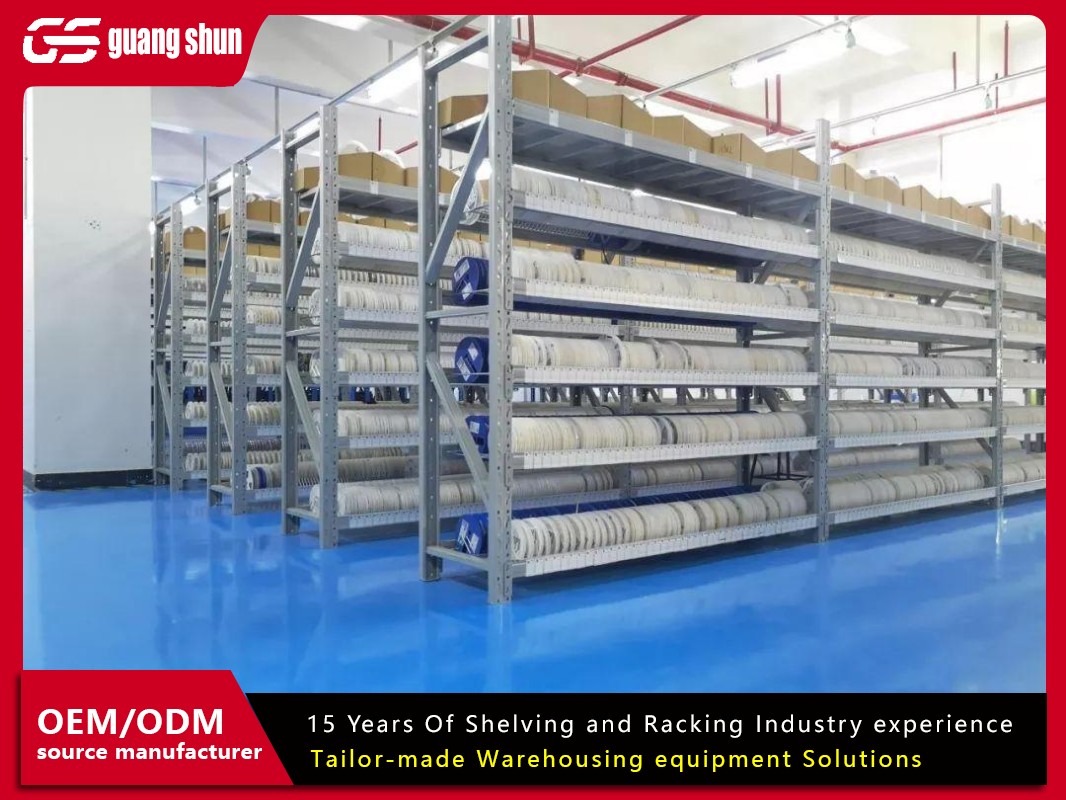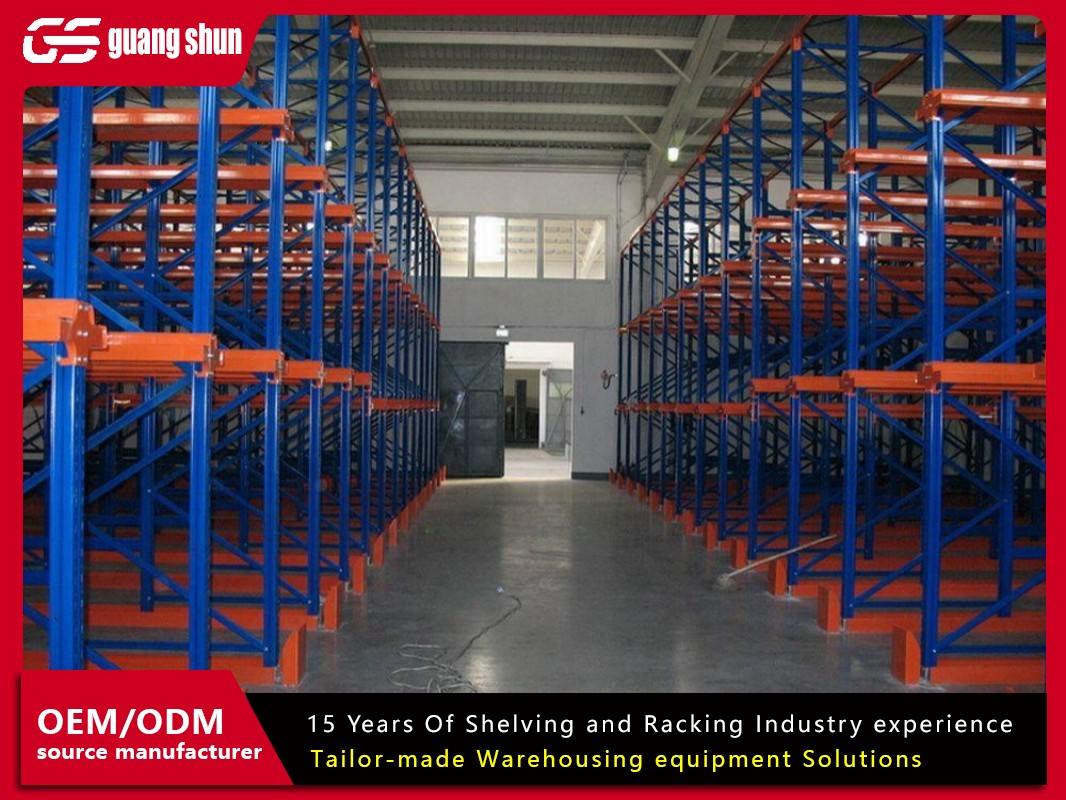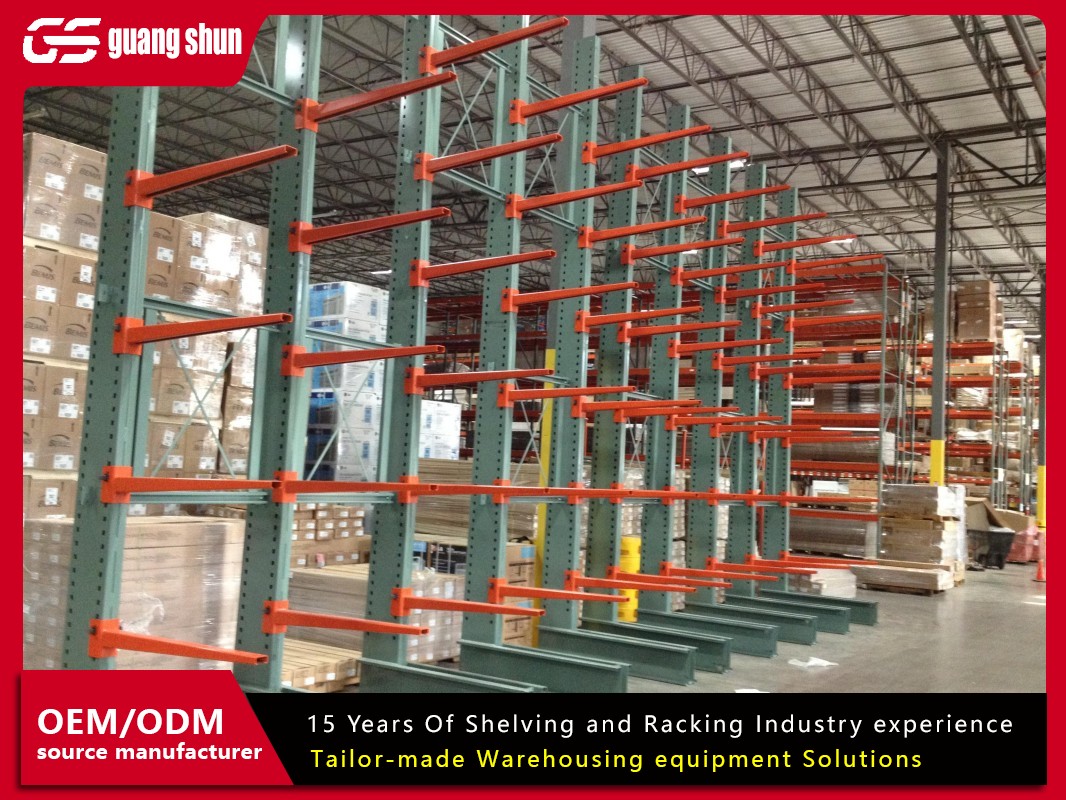In the world of logistics, manufacturing, and retail, space is money. How you utilize your storage space directly impacts your operational efficiency, inventory accuracy, and ultimately, your bottom line. At the heart of any well-organized storage area lies a critical component: the inventory shelving system. Far from being simple static shelves, these systems are engineered solutions designed to store goods safely, access them quickly, and adapt to the ever-changing demands of your business. Whether you're managing a small parts room or a massive distribution center, selecting the right inventory shelving system is a strategic decision. This comprehensive guide will walk you through the different types, key benefits, and essential factors to consider when investing in the backbone of your storage operations. An effective inventory shelving system is the first step toward a leaner, more profitable operation.
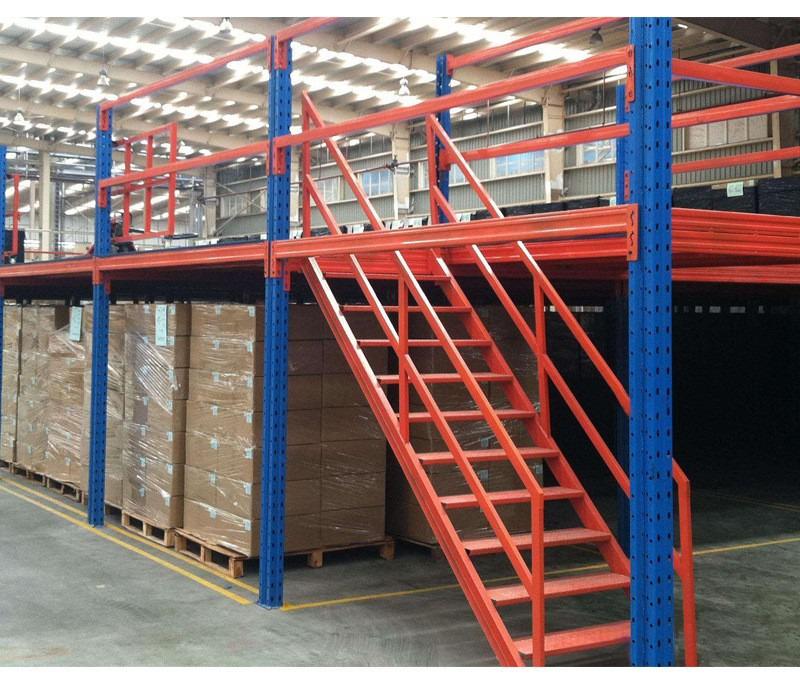
Understanding the Core Types of Inventory Shelving Systems
Not all storage needs are created equal. The variety of products in terms of size, weight, and turnover rate necessitates different kinds of storage solutions. Here’s a breakdown of the most common types of inventory shelving systems available on the market.
Selective Pallet Racking
This is the most ubiquitous inventory shelving system in warehouses worldwide. Its simple, versatile design consists of upright frames and horizontal load beams, creating openings for each pallet. The key feature is that each pallet is individually accessible, hence "selective." This makes it ideal for high-SKU environments where quick access to any specific pallet is required. It's perfect for storing a large variety of products with a high turnover rate.
Cantilever Racking
When your inventory consists of long, bulky, or awkwardly shaped items like timber, pipes, furniture, or carpets, cantilever racking is the go-to inventory shelving system. It features a central column with arms that extend outward, creating unobstructed access along the entire length of the stored item. This design eliminates the need for front-column posts, making loading and unloading with forklifts or side-loaders much more efficient.
Mobile Shelving Systems (High-Density)
For operations where floor space is at an absolute premium, mobile inventory shelving systems offer a brilliant solution. Instead of having multiple fixed aisles, these systems consist of shelving units mounted on carriages that move along tracks. Only one aisle is opened at a time, either manually or via a motorized system. This can increase storage capacity by up to 100% within the same footprint, making it ideal for archives, documents, or slow-moving inventory in a constrained space.
Mezzanine Floors
While not a shelving system in the traditional sense, mezzanines are a powerful complement to any inventory shelving system. They effectively create a second or third level within your existing facility, leveraging your vertical cube. A mezzanine can be used for office space, packing stations, or, most commonly, for additional storage shelving and racking. This is a cost-effective alternative to expanding or relocating your entire operation.
Shelving Units (Bolted, Clip, Wire, etc.)
This category encompasses the smaller-scale inventory shelving systems used for bin storage, small parts, tools, and supplies. They are the workhorses of storerooms, retail backrooms, and workshops.
Bolted Shelving: Extremely sturdy and durable, capable of holding very heavy loads. They require tools for assembly.
Clip-Style Shelving: Easier to assemble and reconfigure without tools, as shelves are held in place by locking clips.
Wire Shelving: Offers excellent visibility and airflow, is lightweight, and is often used in environments where cleanliness is a priority, like food storage or pharmaceuticals.
The Tangible Benefits of an Optimized Inventory Shelving System
Investing in the right inventory shelving system is not an expense; it's an investment that pays continuous dividends. Here’s how a well-planned system transforms your operations.
Maximized Space Utilization: The most immediate benefit. By going vertical and using a high-density system, you can store significantly more inventory within the same square footage. This defers the need for costly facility expansions and reduces your cost per square foot of storage.
Enhanced Inventory Control and Accuracy: An organized system allows for logical inventory placement. Implementing practices like ABC analysis (storing fast-moving items in easily accessible locations) within your inventory shelving system reduces picking and restocking times. Furthermore, a structured layout makes cycle counting and inventory audits faster and more accurate, reducing shrinkage and stockouts.
Improved Safety and Ergonomics: A cluttered, disorganized warehouse is a hazardous one. Proper inventory shelving systems are designed to bear specific loads safely, reducing the risk of collapse. They eliminate tripping hazards and create clear aisles. From an ergonomic perspective, they can be designed to keep heavier items within the "golden zone" (knee to shoulder height), minimizing bending, reaching, and the risk of employee injury.
Increased Operational Efficiency and Productivity: Time spent searching for items is time and money wasted. An optimized inventory shelving system streamlines the entire fulfillment process. Pickers can navigate the warehouse logically, travel shorter distances, and retrieve items faster. This leads to more orders processed per hour, shorter lead times, and a better ability to scale your operations.
Scalability and Flexibility: The best inventory shelving systems grow with your business. Modular designs like selective pallet racking and clip-style shelving can be easily reconfigured, expanded, or even relocated as your inventory profile and volume change. This adaptability protects your initial investment and ensures your storage solution remains effective for years to come.
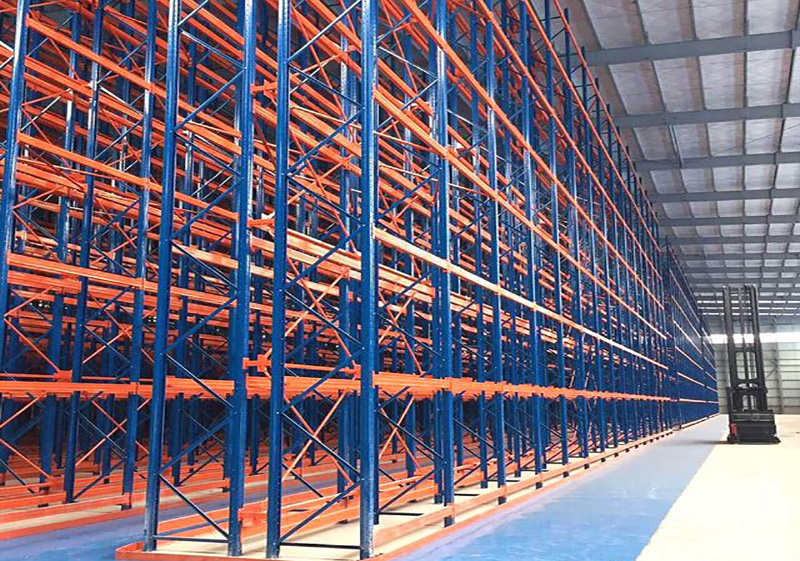
Key Factors to Consider Before Choosing Your System
Selecting the right inventory shelving system requires a thorough analysis of your specific needs. Rushing this process can lead to costly mistakes. Here are the critical factors to evaluate.
Inventory Characteristics: This is your starting point.
Size & Dimensions: What are the physical dimensions of your largest and smallest items?
Weight: What is the per-pallet or per-shelf weight of your products?
Type: Are you storing pallets, small parts, long rolls, or fragile items?
Available Space and Layout: Precisely measure your warehouse's dimensions, including ceiling height. Note the location of columns, doors, sprinkler systems, and other obstructions. The footprint and cube of your space will heavily influence whether you need a high-density mobile system or can utilize standard selective racking.
Accessibility and Turnover Rates: Analyze your inventory turnover. Do you need immediate access to every single SKU (requiring a selective system), or do you have bulk stock of slow-moving items that can be stored in a high-density, drive-in racking system? Implementing a Pareto (80/20) analysis can help determine the best layout for your inventory shelving system.
Handling Equipment (Forklifts, etc.): Your shelving and your material handling equipment must work in harmony. The type of forklifts you use will determine the required aisle width. Narrow-aisle forklifts, for example, can operate in tighter spaces, allowing for a denser inventory shelving system layout.
Budget and Future Growth: Consider both the initial capital outlay and the long-term value. While some systems have a lower upfront cost, they may not be as durable or scalable. Plan not just for your current needs, but for your projected growth over the next 3-5 years to avoid another major investment sooner than necessary.
Integration with Modern Warehouse Management
In today's digital age, a physical inventory shelving system is only half the story. Its true potential is unlocked when integrated with technology.
The Role of Warehouse Management Systems (WMS): A WMS acts as the brain of your operation, while the inventory shelving system is the body. The WMS tells workers exactly where to stock and pick items based on optimized logic. It can direct put-away to the most efficient location and create pick paths that minimize travel time within your shelving layout.
Barcode and RFID Integration: By labeling every shelf and bin location with a unique barcode or RFID tag, you create a digital map of your warehouse. When workers scan both the location and the product, your WMS is updated in real-time. This seamless integration with your inventory shelving system drastically reduces errors and provides unparalleled inventory visibility.
The Rise of Automated Storage and Retrieval Systems (AS/RS): For the ultimate in efficiency, inventory shelving systems are being integrated with robotics. AS/RS include vertical lift modules (VLMs) and automated mini-loads that bring the shelves to the operator. These systems are the pinnacle of high-density, high-accuracy storage, perfectly marrying physical shelving structures with intelligent software.
H2: Maintenance and Safety Best Practices
An inventory shelving system is a significant asset that requires proper care to ensure its longevity and, most importantly, the safety of your workforce.
Regular Inspections: Implement a scheduled inspection program. Employees should be trained to perform daily visual checks for any obvious damage. A formal, documented inspection by a qualified professional should be conducted at least annually to check for structural integrity, plumbness, and connection tightness.
Load Capacity and Clear Signage: NEVER exceed the designated load capacity of your racks or shelves. This information should be clearly displayed on the system itself. Ensure all employees are trained on these limits and understand the dangers of overloading.
Damage Protocol: Establish a clear and immediate protocol for dealing with damage. If a forklift collides with an upright frame, the affected bay must be immediately unloaded and taken out of service until a professional inspection and repair can be conducted. Do not ignore or postpone repairs.
Proper Housekeeping and Aisle Management: Keep aisles clear of debris and obstructions. Ensure that fire extinguishers, electrical panels, and emergency exits are never blocked by the inventory shelving system or stored inventory. Good housekeeping is a cornerstone of warehouse safety.
Making the Final Decision: A Step-by-Step Approach
Conduct an In-Depth Audit: Analyze your current and future inventory, measure your space, and map your workflow.
Set Clear Objectives: Define what you want to achieve—e.g., a 20% increase in storage density, a 15% reduction in picking time, or improved safety records.
Research Reputable Suppliers: Look for companies with a proven track record, positive customer reviews, and that offer professional site planning and design services.
Request Detailed Proposals and Layouts: Don't just ask for a price. Ask for a proposed layout that shows how their inventory shelving system will fit into your space and meet your objectives.
Consider Total Cost of Ownership (TCO): Evaluate not just the purchase price, but the cost of installation, potential facility modifications, future reconfiguration, and maintenance.
Plan for Implementation: Develop a phased installation plan to minimize disruption to your ongoing operations.
Your choice of an inventory shelving system is a foundational decision that impacts nearly every aspect of your storage and fulfillment process. It is the physical framework upon which efficiency, safety, and profitability are built. By understanding the different types of systems, carefully assessing your unique needs, and planning for integration and future growth, you can select an inventory shelving system that not only solves your current storage challenges but also empowers your business to scale new heights of operational excellence. Don't let disorganization hold you back—invest in a system that organizes your space and optimizes your workflow.



